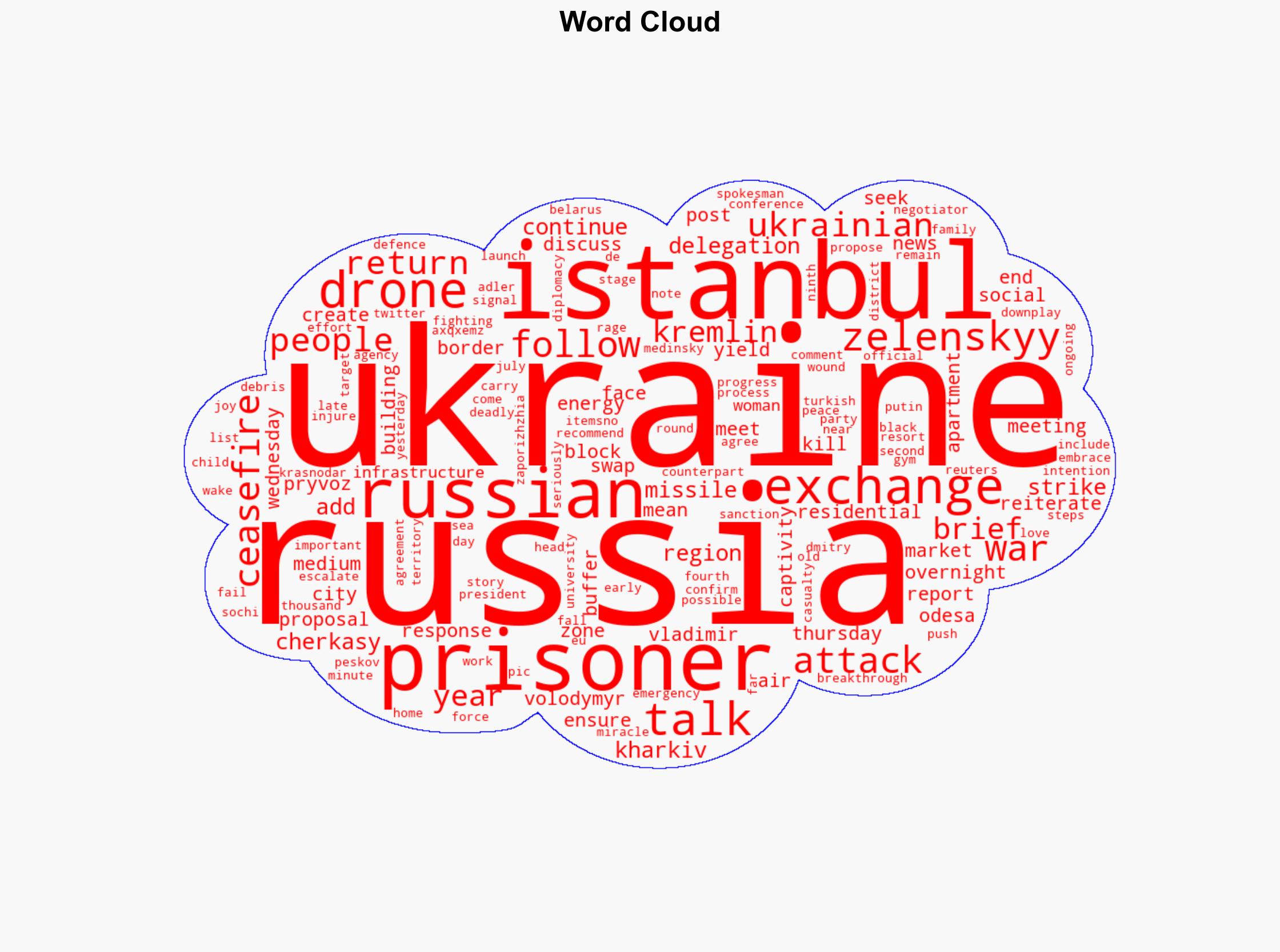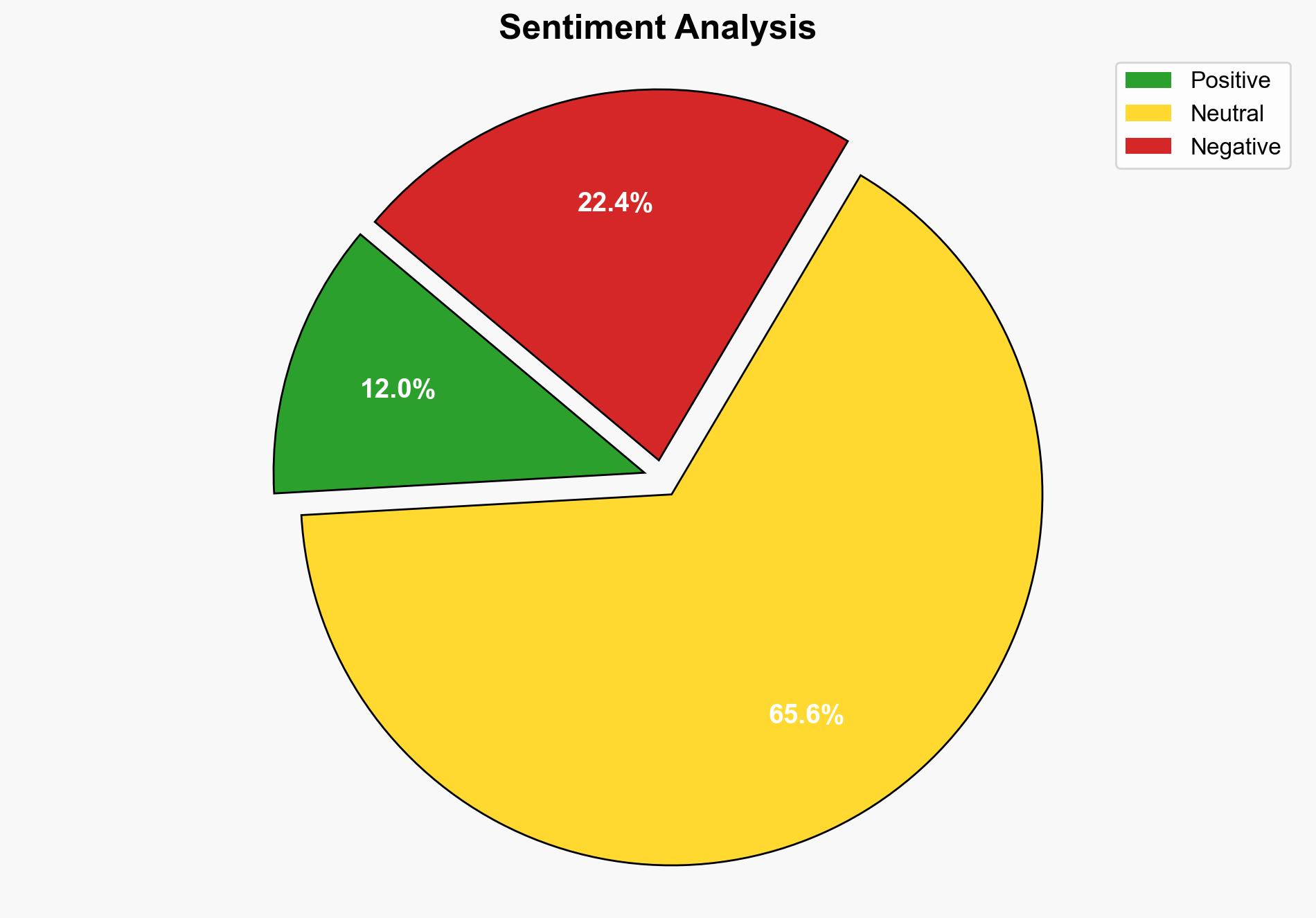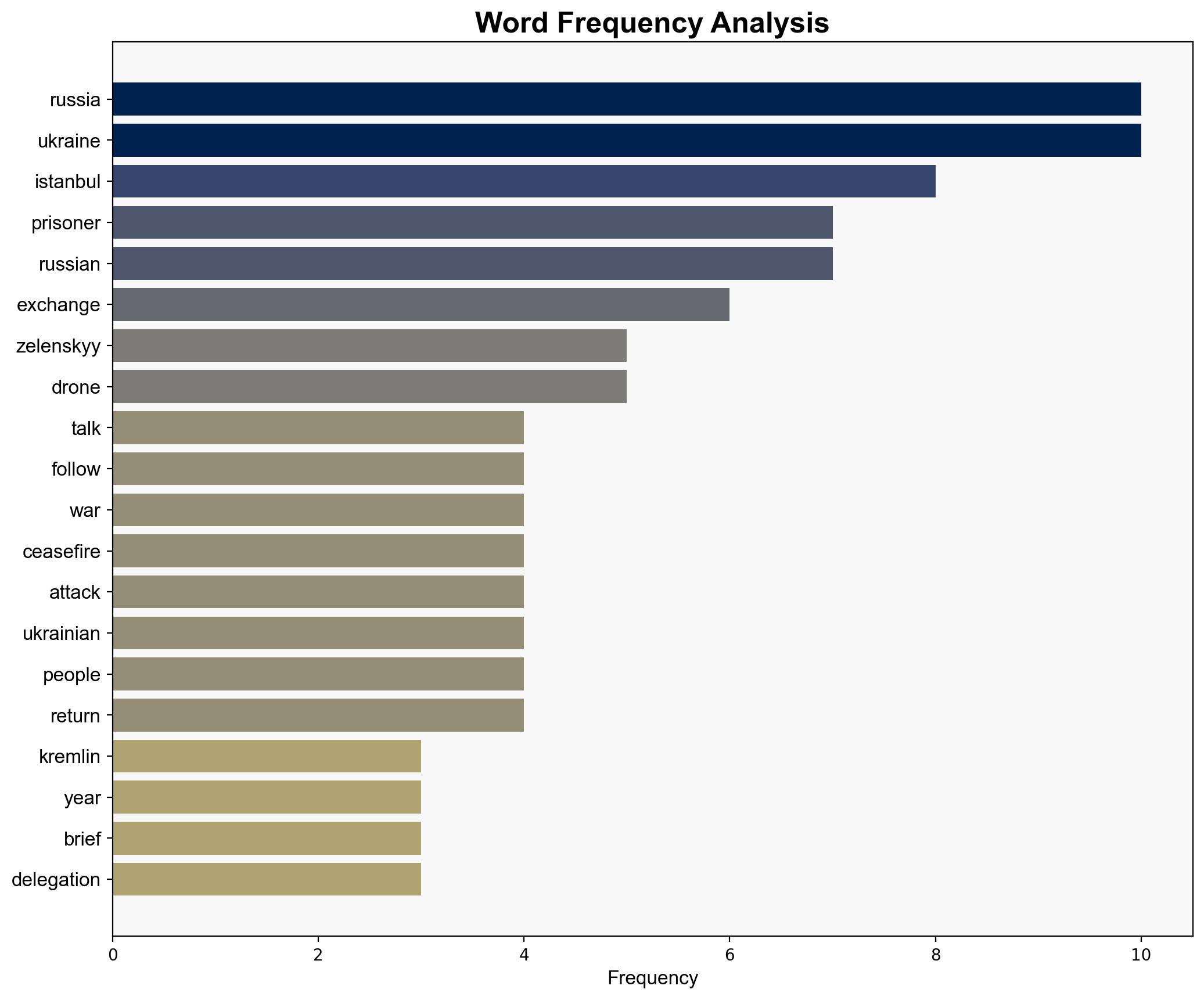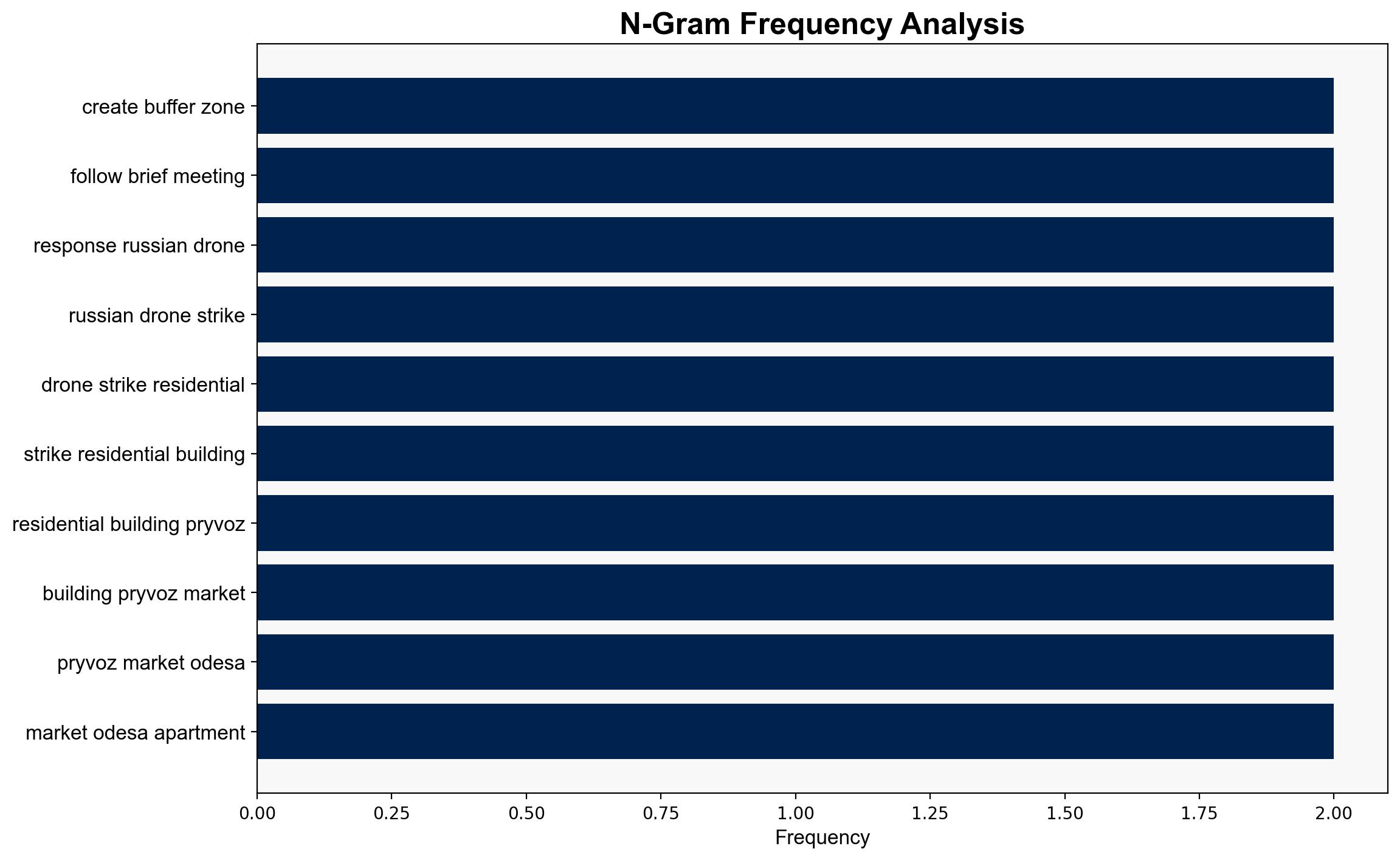Russia seeking to create buffer zones in Ukraine says Kremlin – Al Jazeera English
Published on: 2025-07-24
Intelligence Report: Russia seeking to create buffer zones in Ukraine says Kremlin – Al Jazeera English
1. BLUF (Bottom Line Up Front)
Russia’s intention to create buffer zones in Ukraine, as stated by the Kremlin, suggests a strategic move to consolidate territorial control and potentially de-escalate conflict through controlled territorial adjustments. The most supported hypothesis is that Russia aims to secure strategic depth while maintaining pressure on Ukraine. Confidence in this assessment is moderate due to ongoing military actions contradicting de-escalation claims. Recommended action includes increased diplomatic engagement to clarify intentions and prevent further escalation.
2. Competing Hypotheses
1. **Hypothesis A**: Russia seeks to create buffer zones as a genuine step towards de-escalation and eventual peace settlement. This involves strategic withdrawal to defensible positions while negotiating terms favorable to Russian interests.
2. **Hypothesis B**: The buffer zone narrative is a strategic deception to consolidate territorial gains and maintain military pressure on Ukraine, undermining Ukrainian sovereignty and international support.
Using the Analysis of Competing Hypotheses (ACH) 2.0, Hypothesis B is better supported. Despite talks of de-escalation, continued military actions and lack of substantial progress in peace talks suggest a strategic maneuver rather than a genuine peace effort.
3. Key Assumptions and Red Flags
– **Assumptions**: Hypothesis A assumes Russia’s willingness to negotiate in good faith and prioritize peace over territorial control. Hypothesis B assumes Russia’s strategic interest in maintaining influence over Ukraine outweighs international diplomatic pressures.
– **Red Flags**: Contradictory actions such as ongoing drone and missile attacks despite de-escalation rhetoric. Lack of transparency in negotiations and prisoner exchanges raises questions about underlying motives.
– **Blind Spots**: Limited insight into internal Kremlin deliberations and potential shifts in Russian public opinion or military strategy.
4. Implications and Strategic Risks
– **Geopolitical**: Prolonged conflict risks destabilizing the region, impacting European security and NATO dynamics.
– **Economic**: Continued sanctions and military expenditures strain Russian and Ukrainian economies, with potential global repercussions.
– **Cyber**: Increased cyber warfare risks targeting critical infrastructure in Ukraine and allied nations.
– **Psychological**: Prolonged conflict fosters regional instability and humanitarian crises, affecting civilian morale and international perceptions.
5. Recommendations and Outlook
- Enhance diplomatic efforts to clarify Russia’s intentions and engage in multilateral talks involving key stakeholders.
- Strengthen defensive alliances and support for Ukraine to deter further aggression.
- Monitor cyber activities and bolster cybersecurity measures to protect critical infrastructure.
- Scenario Projections:
- **Best Case**: Successful negotiations lead to a stable ceasefire and gradual de-escalation.
- **Worst Case**: Escalation of military conflict leading to broader regional involvement.
- **Most Likely**: Continued stalemate with sporadic negotiations and military skirmishes.
6. Key Individuals and Entities
– Dmitry Peskov
– Vladimir Medinsky
– Volodymyr Zelenskyy
– Vladimir Putin
7. Thematic Tags
national security threats, regional focus, geopolitical strategy, conflict resolution




